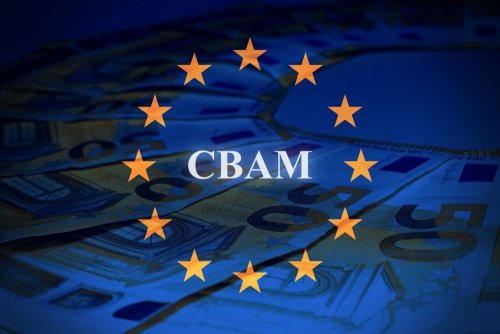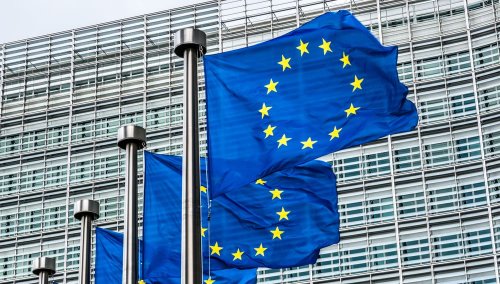On 29 June, the Council of Europe adopted its negotiating positions (common approaches) on important legislative proposals for the Fit for 55 package, in particular on the emissions trading system and the creation of a social climate fund.
These agreements pave the way for negotiations with the European Parliament, said European Council.
Fit for 55 will allow the EU to reduce greenhouse gas emissions by at least 55% by 2030 compared to 1990 levels and achieve climate neutrality in 2050.
Member States have adopted a common position on the EU ETS, the distribution of efforts between Member States in non-ETS (ESR) sectors, emissions and removals from land use, land use change and forestry (LULUCF), the establishment of the Social Climate Fund (SCF) and new CO 2 emission standards for cars and vans.
“The environmental and energy transition will require the contribution of all sectors and all Member States in a fair and inclusive way. The Council is now ready to negotiate a package with the European Parliament, making the European Union more at the forefront of the fight against climate change than ever before," said Agnes Pannier-Runache, France's energy minister.
EU Emissions Trading Scheme (ETS)
It is a carbon market based on an emission control system for energy-intensive industries and the electricity generation sector.
The Council agreed to maintain the overall ambition to reduce emissions by 61% by 2030 in the EU ETS sectors proposed by the Commission, as well as to reduce the overall emission ceiling by 117 million quotas and increase the annual rate of reduction by 4.2% per year (“Linear reduction factor”).
The Council approved a proposal to strengthen the market stability reserve (MSR) by extending the increased annual consumption of allowances (24%) after 2023 and setting a threshold of 400 million allowances above which those placed in the reserve are no longer valid. In addition, they agreed to launch a mechanism that activates the entry into the market of MSR quotas, in case of excessive price increases, automatic and more reactive.
The Council approved a proposal to phase out free benefits for CBAM-related sectors from 2026 to 2035. However, the Council adopted a slower reduction at the beginning and an accelerated reduction at the end of this period. Support for the decarbonisation of industries will be possible through the Innovation Fund. The European Commission was called upon to monitor the impact of CBAM, in particular on carbon leakage in exports, and to assess whether additional measures are needed.
Improved fund management and transparency
The Council maintained an increase in the size of the Modernization Fund through an auction by an additional 2.5% of the ceiling, an increase in the share of priority investments to 80% and the addition of new eligible sectors, as proposed by the Commission. The Council decided to expand the list of Member States benefiting from the Modernization Fund. In principle, natural gas projects will not be eligible for participation in the Fund. However, the Council has introduced a transitional measure that allows the Fund's beneficiaries to continue funding natural gas projects under certain conditions.
The Innovation Fund's provisions for more efficient and geographically balanced participation in projects have also been strengthened, while maintaining the principle of excellence in project allocation. The Council agreed to pay special attention to the decarbonisation of the maritime sector under the Innovation Fund and to include its emissions in the EU ETS.
Additional transitional free allocation may be granted under certain conditions to the district heating sector in certain Member States under certain conditions in order to encourage the decarbonisation of that sector.
As Member States that are heavily dependent on maritime transport will, of course, suffer the most, the Council has agreed to reallocate 3.5% of the maximum amount of allowances for auction between these Member States. In addition, the general approach takes into account geographical features and offers transitional measures for small islands, winter navigation and travel related to public service obligations, and strengthens measures to combat the risk of carbon leakage in the maritime sector.
The general approach includes non-CO2 emissions in the MRV regulation from 2024 and introduces a revision clause for their further inclusion in the EU ETS.
The Council agreed to establish a new, separate emissions trading system for buildings and road transport. It will apply to distributors who supply fuel for consumption in construction and road transport. The auction and commitments will start in 2028. The emission reduction trajectory and the linear reduction factor, set at 5.15 from 2024 and 5.43 from 2028, will remain as proposed by the Commission. The Council supported the proposal to put up for auction an additional 30% of the auction volume during the first year of system launch so that it would run smoothly ("pre-boot").
The Council has introduced an option for all types of fossil fuels. It has introduced simplified reporting requirements for monitoring and verification for small fuel suppliers.
The Council added a temporary option for Member States to exempt suppliers from quota until December 2030, if they are subject to carbon tax at national level, which is equivalent to or higher than the auction price of quotas in the ETS. for the construction and transport sectors.
The Council agreed to phase out free emission quotas for the aviation sector by 2027 and to align the proposal with the Global Carbon Compensation and Reduction Scheme for International Aviation (CORSIA). EU ETS will apply to intra-European flights, as well as the United Kingdom and Switzerland. The council has agreed to allocate 20 million free benefits, which are being phased out to offset the additional costs of using environmentally friendly aviation fuel (SAF). The Council's agreement takes into account specific geographical circumstances and proposes limited transitional derogations.
Social Climate Fund (SCF)
The SCF will be established between 2027 and 2032 to support vulnerable households, micro-enterprises and transport users to support the establishment of an emissions trading system for buildings and road transport.
Each Member State will submit to the Commission a "social climate plan" containing a set of measures and investments to address the impact of carbon pricing on vulnerable citizens.
The Council agreed that this fund would be part of the EU budget and would be replenished from external earmarked revenues up to the maximum amount € 59 billion.
The Council decided to apply the upper limit of 35% of the estimated total expenditure on social climate plans to the ability of member countries to offer temporary direct income support and opted for direct management of the Fund's performance combined with elements of joint management.
Adjustment of effort distribution
Council agrees to reduce EU-level greenhouse gas emissions by 40% compared to 2005 for non-covered sectors ETS, namely domestic maritime transport, agriculture, waste and small industry. The construction industry and road transport sectors will be covered by both the new specialized system of trade in goods and the regulation of the distribution of efforts. At present, these sectors together generate about 60% of the EU's greenhouse gas emissions.
The Council agreed to maintain the increased national targets as proposed by the Commission. The Council agreed that the linear emission trajectories for each Member State will be adjusted in 2025 only if this leads to an increase in the annual limits for the Member State concerned, for reasons of predictability and to take into account the impact of unforeseen events.
In particular, the general approach increases the number of annual emission quotas that can be transferred between Member States to 10% between 2021 and 2025 and up to 20% for 2026-2030. He also supports the proposal to divide the flexibility associated with land use, land use change and forestry into two periods.
Land Use Change and Forestry (LULUCF)
The Land Use, Land Use Change and Forestry (LULUCF) sector covers the use of soils, trees, plants, biomass and timber.
The Council reaffirmed the overall target of 310 million tonnes of CO2 equivalent of net absorption in the sector in 2030 at EU level. The Council has set a commitment for each Member State to achieve the amount of net emissions and removals of greenhouse gases for the entire period from 2026 to 2030 ("budget for 2026-2030"), which will be based on the trajectory of the estimated annual values. The Council decided to maintain the distribution of objectives between Member States, as proposed by the Commission.
The Council agreed to increase flexibility to support Member States that have difficulty in achieving their targets due to factors beyond their control that affect the LULUCF sector, provided that the Union as a whole achieves its target by 2030.
In particular, the Council has introduced additional flexibility related to the effects of climate change and organic soils, based on objective and measurable criteria and indicators. In order to have access to such flexibility, the Member States concerned will have to provide evidence to the Commission in accordance with a clearly defined methodology. In addition, the Council decided to maintain the possibility of excluding emissions from natural disturbances in the period 2026-2030, provided that compensation for natural disturbances is not used within the framework of flexibility.
The Board confirmed the withdrawal of the LULUCF bank loan option between the two matching periods (2021-2025 and 2026-2030).
The Council agreed that the Commission will report within six months of the first global inventory under the Paris Agreement (to be held in 2023) on the inclusion of non-CO2 greenhouse gas emissions from agriculture in the scope of regulation and establishment. targets for the land use sector for the period after 2020.
CO2 emission performance standards for cars and vans
The Council agreed to raise CO2 reduction targets for new cars and new vans by 2030 to 55% instead of cars and up to 50% for vans. The Council also agreed to set a target of reducing CO2 emissions by 100% by 2035 for new cars and vans.
Enabling drivers to charge their cars in Member States will be provided by an appropriate review of the deployment of alternative fuel infrastructure (AFIR).
In 2026, the Commission will assess progress on 100% emission reductions and the need to review these targets in the light of technological developments, in particular on plug-in hybrid technologies and the importance of a viable and socially just transition. to zero emissions.
The Council agreed to end the regulatory incentive mechanism for zero- and low-emission vehicles from 2030.
We will remind, experts told about social component green transition.





